
1969
 “Iron Man” #21 introduced us to Eddie March, the first Black man to ever substitute for Tony Stark and don the Iron Man armor a full 15 years before James Rhodes was allowed to do anything more than shine it.
“Iron Man” #21 introduced us to Eddie March, the first Black man to ever substitute for Tony Stark and don the Iron Man armor a full 15 years before James Rhodes was allowed to do anything more than shine it.
 In “Spider-Man” #78, Peter Parker encounters the apprentice to the original Prowler, a Black teenager not too far from his own age. Spidey doesn’t run the kid in and eventually he get his act together and becomes a hero, eventually even headlining his own title.
In “Spider-Man” #78, Peter Parker encounters the apprentice to the original Prowler, a Black teenager not too far from his own age. Spidey doesn’t run the kid in and eventually he get his act together and becomes a hero, eventually even headlining his own title.

 “Captain America” #117 is a landmark issue because it features the first appearance of Captain America’s closest ally, The Falcon. Eventually, Falcon and Cap will become a hell of a crime fighting duo (although Falcon became the unofficial hero of Harlem for a hot minute in the 70's).
“Captain America” #117 is a landmark issue because it features the first appearance of Captain America’s closest ally, The Falcon. Eventually, Falcon and Cap will become a hell of a crime fighting duo (although Falcon became the unofficial hero of Harlem for a hot minute in the 70's).
 Then, Marvel Comics will play themselves and shit all over him by creating this horrible origin for him years later in issue #186 that they are still apologizing about to this very day (read it for yourself, I’d rather not rehash it because it tends to make me mad). The Falcon would also later join The Avengers and double their Black membership (Black Panther).
Then, Marvel Comics will play themselves and shit all over him by creating this horrible origin for him years later in issue #186 that they are still apologizing about to this very day (read it for yourself, I’d rather not rehash it because it tends to make me mad). The Falcon would also later join The Avengers and double their Black membership (Black Panther). 1970
1970 Ted Shearer, a veteran Black cartoonist (Next Door, Around Harlem) created a new syndicated comic strip called “Quincy”.
Ted Shearer, a veteran Black cartoonist (Next Door, Around Harlem) created a new syndicated comic strip called “Quincy”.
Shearer’s art style was iconic and is widely recognized by a whole generation due to his involvement in the “Billy Joe Jive & Smart Suzie Sunset” segments that aired on Sesame Street throughout the 70’s and early 80’s and the book series they spawned.
 Jim Lawrence and Jorge Longaron create “Friday Foster”, a comic strip about a gorgeous Black fashion photographer and the drama that surrounds her everyday life and work. The strip’s run was pretty uneventful and very little character development happened although Friday did transition to modeling herself at one point. The strip only lasted until 1974 and in 1975 a “Friday Foster” movie was made and the lead character was played by the incomparable Pam Grier.
Jim Lawrence and Jorge Longaron create “Friday Foster”, a comic strip about a gorgeous Black fashion photographer and the drama that surrounds her everyday life and work. The strip’s run was pretty uneventful and very little character development happened although Friday did transition to modeling herself at one point. The strip only lasted until 1974 and in 1975 a “Friday Foster” movie was made and the lead character was played by the incomparable Pam Grier.
 Mort Walker added a Black character named Lt. Jack Flap to his strip “Beetle Bailey”. “Stars & Stripes” magazine refused to run it at first (Why am I not surprised?). Here’s what it looked like for the average American the first time Jack Flap showed up in a “Beetle Bailey” strip in the paper that historic day (the huge ‘fro makes it hard for him to be conspicuous).
Mort Walker added a Black character named Lt. Jack Flap to his strip “Beetle Bailey”. “Stars & Stripes” magazine refused to run it at first (Why am I not surprised?). Here’s what it looked like for the average American the first time Jack Flap showed up in a “Beetle Bailey” strip in the paper that historic day (the huge ‘fro makes it hard for him to be conspicuous). In DC’s title “Jimmy Olsen, Friend Of Superman” #133, Jack Kirby introduced his readers to the new Newsboy Legion, this time around they have a Black member named Fipper Dipper (that's him waaay in the back hiding behind Superman..punk!). He apparently is a really good swimmer and can do wonders underwater (like Aquaman, but Black and without the ability to speak to sea life). This ushers in an era of new Black heroes with odd abilities that brothers aren’t typically known for.
In DC’s title “Jimmy Olsen, Friend Of Superman” #133, Jack Kirby introduced his readers to the new Newsboy Legion, this time around they have a Black member named Fipper Dipper (that's him waaay in the back hiding behind Superman..punk!). He apparently is a really good swimmer and can do wonders underwater (like Aquaman, but Black and without the ability to speak to sea life). This ushers in an era of new Black heroes with odd abilities that brothers aren’t typically known for. The most important Black hero to emerge this year was without a doubt DC’s Mal Duncan who made his first appearance in Teen Titans #26 when he was recruited by a depowered Teen Titan team after helping them fend off a racist street gang (of course!). Mal Duncan would go through several different guises through the years and have several different powers. He was Guardian and then Hornblower and later Vox. Mal Duncan is still a major player in the DC Universe.
The most important Black hero to emerge this year was without a doubt DC’s Mal Duncan who made his first appearance in Teen Titans #26 when he was recruited by a depowered Teen Titan team after helping them fend off a racist street gang (of course!). Mal Duncan would go through several different guises through the years and have several different powers. He was Guardian and then Hornblower and later Vox. Mal Duncan is still a major player in the DC Universe.
1971
 Jack Kirby goes and creates the 4th World in the DC Universe, an event that signals the beginning of the Bronze Age of Comic Books to many. In “Forever People” #1 a new race of super powerful young heroes is introduced and among them is Vykin The Black. Since he’s the only Black one, I’m not too sure why he needs the qualifier with his name/title.
Jack Kirby goes and creates the 4th World in the DC Universe, an event that signals the beginning of the Bronze Age of Comic Books to many. In “Forever People” #1 a new race of super powerful young heroes is introduced and among them is Vykin The Black. Since he’s the only Black one, I’m not too sure why he needs the qualifier with his name/title. “New Gods” #3 introduces the DC readers to Black Racer, he possesses cosmic powers and he can travel throughout space and time with what appear to be rocket skis (I wish I was making this up!). Silver Surfer had a surfboard...a Black man becomes a God and gets cosmic powered skis. I never read this book growing up so I can’t add anything new.
“New Gods” #3 introduces the DC readers to Black Racer, he possesses cosmic powers and he can travel throughout space and time with what appear to be rocket skis (I wish I was making this up!). Silver Surfer had a surfboard...a Black man becomes a God and gets cosmic powered skis. I never read this book growing up so I can’t add anything new. “Green Lantern “#87 was the debut of John Stewart, the new Green Lantern. John Stewart was painted as a young Black professional with a chip on his shoulder. He was angry and seething with Black rage. The Green Lantern Corps wasn’t so sure he should’ve got a ring but when he got into action he channelled all that aggression and kicked ass. When kids of this generation think of Green Lantern, they only know him as a Black guy. That cracks me up.
“Green Lantern “#87 was the debut of John Stewart, the new Green Lantern. John Stewart was painted as a young Black professional with a chip on his shoulder. He was angry and seething with Black rage. The Green Lantern Corps wasn’t so sure he should’ve got a ring but when he got into action he channelled all that aggression and kicked ass. When kids of this generation think of Green Lantern, they only know him as a Black guy. That cracks me up.
1972
 Stan Lee created a Black superhero to head up his own title called “Luke Cage, Hero For Hire”. Cage sounded like he stepped straight out of a comic book. He was supposed to emulate the heroes of the ultra popular “Blaxploitation” era of films. Luke Cage spoke in broken English to appear “street” and he dispensed his own brand of street justice while wearing a ridiculous outfit with a metal band around his afro and a metal link chain for a belt (?).
Stan Lee created a Black superhero to head up his own title called “Luke Cage, Hero For Hire”. Cage sounded like he stepped straight out of a comic book. He was supposed to emulate the heroes of the ultra popular “Blaxploitation” era of films. Luke Cage spoke in broken English to appear “street” and he dispensed his own brand of street justice while wearing a ridiculous outfit with a metal band around his afro and a metal link chain for a belt (?). Whose idea was the canary yellow shirt? Luke Cage had dense flesh (tungsten hard skin), super strength and street smarts...he also fought a strange collection of Black villians. I often laugh out loud when reading some of these old issues now.
Whose idea was the canary yellow shirt? Luke Cage had dense flesh (tungsten hard skin), super strength and street smarts...he also fought a strange collection of Black villians. I often laugh out loud when reading some of these old issues now. Eventually, Luke Cage would join forces with Iron Fist and later on he would get his own title again in the early 90’s. Cage’s character morphed over the years, became even more powerful and respected as one of the foremost characters in the entire Marvel Universe. He’s now the leader of the New Avengers and his likeness has become my avi of choice because I walked into a comic book store one day and saw my face on the cover of one of them. Here's to Luke Cage, a cat so cool Nicolas Coppolla took his name when he became an actor.
Eventually, Luke Cage would join forces with Iron Fist and later on he would get his own title again in the early 90’s. Cage’s character morphed over the years, became even more powerful and respected as one of the foremost characters in the entire Marvel Universe. He’s now the leader of the New Avengers and his likeness has become my avi of choice because I walked into a comic book store one day and saw my face on the cover of one of them. Here's to Luke Cage, a cat so cool Nicolas Coppolla took his name when he became an actor.
1973
 Marvel’s “Strange Tales” #169 featured one of the most bizarre heroes ever, Brother Voodoo. A Black man who is also a medical doctor as well as a Voodoo priest has the power to entrance people, possess them, make dolls that can iflict pain on them or manipulate them as well. He can also temporarily raise the dead, most notably his own decaesed brother who serves as his muscle in certain occasions. PCP is one hell of a drug!
Marvel’s “Strange Tales” #169 featured one of the most bizarre heroes ever, Brother Voodoo. A Black man who is also a medical doctor as well as a Voodoo priest has the power to entrance people, possess them, make dolls that can iflict pain on them or manipulate them as well. He can also temporarily raise the dead, most notably his own decaesed brother who serves as his muscle in certain occasions. PCP is one hell of a drug! In “Tomb Of Dracula” #10, a Black vampire hunter named Blade made his first ever appearance. He was an expert with knives and sharp objects and he could take out a group of vampires all by himself. He worked with the Van Helsing’s to try to exterminate Dracula until Doctor Strange created the spell that killed all of the vampires for “good”. In the early 90’s, the Blade character was resurrected and he became the Blade that we know now from the movie franchise. It's hard to believe that Blade is 35 years old.
In “Tomb Of Dracula” #10, a Black vampire hunter named Blade made his first ever appearance. He was an expert with knives and sharp objects and he could take out a group of vampires all by himself. He worked with the Van Helsing’s to try to exterminate Dracula until Doctor Strange created the spell that killed all of the vampires for “good”. In the early 90’s, the Blade character was resurrected and he became the Blade that we know now from the movie franchise. It's hard to believe that Blade is 35 years old.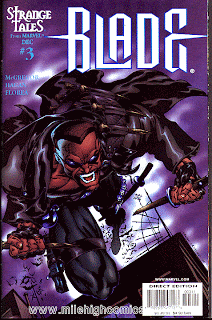
 “Mister Miracle” #15 is the debut of Mister Miracle’s apprentice, a young Black man donning his uniform and performing in his place. Eventually, he would become the new Mister Miracle and join the growing ranks of Black superheroes.
“Mister Miracle” #15 is the debut of Mister Miracle’s apprentice, a young Black man donning his uniform and performing in his place. Eventually, he would become the new Mister Miracle and join the growing ranks of Black superheroes. “Wonder Woman” #206 features Diana fighting to the death against the twin sister she never knew she had, Nubia. Apparently, her mother made them both at the same time, Diana from sand and Nubia from clay. Then Nubia mysteriously dissapeared and didn’t show up until 1973 to fight for the right to be Wonder Woman. Needless to say, Diana won and her Black twin sister only made sporadic appearances over the next 15 years before she was never heard from again.
“Wonder Woman” #206 features Diana fighting to the death against the twin sister she never knew she had, Nubia. Apparently, her mother made them both at the same time, Diana from sand and Nubia from clay. Then Nubia mysteriously dissapeared and didn’t show up until 1973 to fight for the right to be Wonder Woman. Needless to say, Diana won and her Black twin sister only made sporadic appearances over the next 15 years before she was never heard from again.1974
 In the thrilling pages of “Deadly Hands Of Kung Fu”, a comic book Marvel created to capitalize off of the Blaxploitation and Kung Fu craze we read about the Sons Of The Tiger. These three Kung Fu experts wore talismans that gave them increased powers, among them was Abe Brown AKA Black Tiger. He ended up inspiring the creation of a DC character the next year.
In the thrilling pages of “Deadly Hands Of Kung Fu”, a comic book Marvel created to capitalize off of the Blaxploitation and Kung Fu craze we read about the Sons Of The Tiger. These three Kung Fu experts wore talismans that gave them increased powers, among them was Abe Brown AKA Black Tiger. He ended up inspiring the creation of a DC character the next year.1975
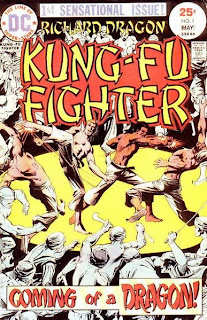 DC decided to create it’s own Kung Fu comic book title called “Richard Dragon, Kung Fu Fighter”. In it’s debut issue we’re introduced to Black Kung Fu expert, Bronze Tiger. He ends up the leader of DC’s Suicide Squad in the 80’s and he even beats Batman in a one on one fight resulting in the death of Batwoman.
DC decided to create it’s own Kung Fu comic book title called “Richard Dragon, Kung Fu Fighter”. In it’s debut issue we’re introduced to Black Kung Fu expert, Bronze Tiger. He ends up the leader of DC’s Suicide Squad in the 80’s and he even beats Batman in a one on one fight resulting in the death of Batwoman.
 Black Goliath makes his first appearance in “Luke Cage, Power Man”#24. He first appeared as a regular character in 1966 but began his superhero career in this issue. He would go on to become a recurring hero and take on different names (Giant Man and Goliath) because face it, Black Goliath is a horrible, horrible name for a superhero...or anything else for that matter.
Black Goliath makes his first appearance in “Luke Cage, Power Man”#24. He first appeared as a regular character in 1966 but began his superhero career in this issue. He would go on to become a recurring hero and take on different names (Giant Man and Goliath) because face it, Black Goliath is a horrible, horrible name for a superhero...or anything else for that matter. Misty Knight, one of the Daughters Of The Dragon first appears in “Marvel Premiere” #20. This Black female cop was not only a martial arts expert and a brilliant detective, but she had a bionic hand thanks to Tony Starks. She ended up briefly romantically involved with Iron Fist, she was the former roomate of Jean Grey during the Phoenix Saga and half of Nightwing Restorations with Coleen Wing, her fellow Daughter Of The Dragon.
Misty Knight, one of the Daughters Of The Dragon first appears in “Marvel Premiere” #20. This Black female cop was not only a martial arts expert and a brilliant detective, but she had a bionic hand thanks to Tony Starks. She ended up briefly romantically involved with Iron Fist, she was the former roomate of Jean Grey during the Phoenix Saga and half of Nightwing Restorations with Coleen Wing, her fellow Daughter Of The Dragon.
 Storm makes her debut as one of the new X-Men in “Giant Size X-Men” #1. The former pickpocket, master thief and street fighter was also a mutant who controlled the weather. In her native Africa, she was often worshipped as a goddess (not because of her long, luxurious white tresses, mind you).
Storm makes her debut as one of the new X-Men in “Giant Size X-Men” #1. The former pickpocket, master thief and street fighter was also a mutant who controlled the weather. In her native Africa, she was often worshipped as a goddess (not because of her long, luxurious white tresses, mind you). She fought Callisto to become leader of the Morlocks in X-Men #169 and shortly afterwards she underwent a change. She became one of the leaders of the X-Men , shaved her hair into a mohawk and she began wearing tight leather outfits and punk gear after Rogue joined the X-Men.
She fought Callisto to become leader of the Morlocks in X-Men #169 and shortly afterwards she underwent a change. She became one of the leaders of the X-Men , shaved her hair into a mohawk and she began wearing tight leather outfits and punk gear after Rogue joined the X-Men. Storm is now the Queen Of Wakanda and is married to T’Challa AKA Black Panther. Ain’t Black love grand?
Storm is now the Queen Of Wakanda and is married to T’Challa AKA Black Panther. Ain’t Black love grand?1976
 In “Superboy” #216, Superboy and the Legion Of Super Heroes ran across an island inhabited by nothing but Black people in distress (in the 30th century) but they don’t want the League’s help because the world ignores them (is this island New Orleans?). Eventually, the League is allowed to help them out. One of the island dwellers is an afroed, half naked teen named Tyroc that has sonic super powers and just by screaming he can create different and specific effects. After appearing in “Superboy” #218 and #222, Tyroc finally agrees and joins the Legion Of Super Heroes. Now just if he wore some damn pants once in a while!
In “Superboy” #216, Superboy and the Legion Of Super Heroes ran across an island inhabited by nothing but Black people in distress (in the 30th century) but they don’t want the League’s help because the world ignores them (is this island New Orleans?). Eventually, the League is allowed to help them out. One of the island dwellers is an afroed, half naked teen named Tyroc that has sonic super powers and just by screaming he can create different and specific effects. After appearing in “Superboy” #218 and #222, Tyroc finally agrees and joins the Legion Of Super Heroes. Now just if he wore some damn pants once in a while!
1977
 Marvel Comics introduces the Human Top in “Invaders” #28 as a member of the Kid Commandos. In this retconned storyline, a Black soldier is accidentally given the power to *ahem!* spin around super fast. It would’ve had to have been an accident because that’s quite a gay power to acquire (yes, there was a previous Golden Age Human Top). He fought next to Captain America for a short while before being killed by the U-Man. What a way to go out, out like a sucker.
Marvel Comics introduces the Human Top in “Invaders” #28 as a member of the Kid Commandos. In this retconned storyline, a Black soldier is accidentally given the power to *ahem!* spin around super fast. It would’ve had to have been an accident because that’s quite a gay power to acquire (yes, there was a previous Golden Age Human Top). He fought next to Captain America for a short while before being killed by the U-Man. What a way to go out, out like a sucker. “Spider-Man” #172 was the first time Spidey ever encountered Rocket Racer, a brother with a rocket powered skateboard that could go super fast and up walls. Ol’ Web Head ran into Rocket Racer quite often and eventually he would turn over a new leaf and become a hero.
“Spider-Man” #172 was the first time Spidey ever encountered Rocket Racer, a brother with a rocket powered skateboard that could go super fast and up walls. Ol’ Web Head ran into Rocket Racer quite often and eventually he would turn over a new leaf and become a hero. DC Comics had a title called “Showcase” and in issue #94 the new Doom Patrol featured Tempest, a Black mutant that could emit bolts of electricity from his hands. The new Doom Patrol only appeared in issues #94--96 before a new story was added next issue.
DC Comics had a title called “Showcase” and in issue #94 the new Doom Patrol featured Tempest, a Black mutant that could emit bolts of electricity from his hands. The new Doom Patrol only appeared in issues #94--96 before a new story was added next issue. “Teen Titans” #48 featured Karen Beecher, girlfriend of Mal Duncan donning a uniform and some weapons she created to attack the Teen Titans and prove Mal’s worth to the team.
“Teen Titans” #48 featured Karen Beecher, girlfriend of Mal Duncan donning a uniform and some weapons she created to attack the Teen Titans and prove Mal’s worth to the team. Once the attack was over, she revealed herself and she was offered a spot on the team. Bumblebee became a member of the Teen Titans and later a member of Titans West. In the 80’s, she and Mal were married.
Once the attack was over, she revealed herself and she was offered a spot on the team. Bumblebee became a member of the Teen Titans and later a member of Titans West. In the 80’s, she and Mal were married.
 “Men Of War” was a new series that starred Ulysses “Gravedigger” Hazard, the “one man platoon” and new leader of Easy Company. Gravedigger was given his name because he wasn’t allowed to fight alongside his unit (‘Cism!) and was relegated to grave digging duty until he proved himself to be a remarkable fighter and became a member of Easy Company. Eventually, Sgt. Rock himself would pass the mantle of leadership to Hazard and “Men Of War” ran a total of 26 issues and featured a Black man in the lead role as a super soldier. He made Gabe Jones look like the Human Top in comparison.
“Men Of War” was a new series that starred Ulysses “Gravedigger” Hazard, the “one man platoon” and new leader of Easy Company. Gravedigger was given his name because he wasn’t allowed to fight alongside his unit (‘Cism!) and was relegated to grave digging duty until he proved himself to be a remarkable fighter and became a member of Easy Company. Eventually, Sgt. Rock himself would pass the mantle of leadership to Hazard and “Men Of War” ran a total of 26 issues and featured a Black man in the lead role as a super soldier. He made Gabe Jones look like the Human Top in comparison. “Black Lightning” #1 was the first appearance of Gotham’s newest hero. He was super fast and he had the power to manipulate electricity, which he used to beat up bad guys and clean up the streets.
“Black Lightning” #1 was the first appearance of Gotham’s newest hero. He was super fast and he had the power to manipulate electricity, which he used to beat up bad guys and clean up the streets. When it became time for Hanna Barbera to introduce a Black hero to the Justice League Of America/Superfriends they chose the new popular Black Lightning but couldn’t nail down his rights. That forced them to create a facsimile and name him Black Vulcan then add him to the team for the cartoon along with a Native American and an Asian. Whoa.
When it became time for Hanna Barbera to introduce a Black hero to the Justice League Of America/Superfriends they chose the new popular Black Lightning but couldn’t nail down his rights. That forced them to create a facsimile and name him Black Vulcan then add him to the team for the cartoon along with a Native American and an Asian. Whoa.
1978
 In the pages of “Marvel Premiere” #41, the one off story “Seeker 3000” featured twins, heroes and space explorers Ben and Valida Payton on a spaceship that become sentient and endangers their mission. Ben and Valida appeared again when the cast of “Seeker 3000” was resurrected by DC in the early 90’s miniseries.
In the pages of “Marvel Premiere” #41, the one off story “Seeker 3000” featured twins, heroes and space explorers Ben and Valida Payton on a spaceship that become sentient and endangers their mission. Ben and Valida appeared again when the cast of “Seeker 3000” was resurrected by DC in the early 90’s miniseries.1979
 Legendary pilot Black Eagle appears in segments of “All Out War” #1-6 alongside some of the wierdest heroes in DC Comics’ history. He was never seen or used again, either. Lord knows there are far too many comic books about Black combat pilots out there as it is!
Legendary pilot Black Eagle appears in segments of “All Out War” #1-6 alongside some of the wierdest heroes in DC Comics’ history. He was never seen or used again, either. Lord knows there are far too many comic books about Black combat pilots out there as it is!1980
 “DC Comics presents” #26 features the first appearance of one of DC’s most popular Black heroes of all times, Vic Stone AKA Cyborg. His origin issue was a must have amongst comic book fans of all walks of life and his unique character helped “The New Teen Titans” compete with Marvel’s “X-Men” and “New Mutants” every month back in the early 80’s.
“DC Comics presents” #26 features the first appearance of one of DC’s most popular Black heroes of all times, Vic Stone AKA Cyborg. His origin issue was a must have amongst comic book fans of all walks of life and his unique character helped “The New Teen Titans” compete with Marvel’s “X-Men” and “New Mutants” every month back in the early 80’s. Vic Stone’s parents worked at S.T.A.R Labs and an accident led to Vic’s body being ravaged. His parents created cybernetic body parts for him and gave him several augmentations. He fought to try to feel like the same ‘ol human Vic but was often prone to bouts of depression, anger and mood swings regarding his race, appearance and new responsibilities as a hero.
Vic Stone’s parents worked at S.T.A.R Labs and an accident led to Vic’s body being ravaged. His parents created cybernetic body parts for him and gave him several augmentations. He fought to try to feel like the same ‘ol human Vic but was often prone to bouts of depression, anger and mood swings regarding his race, appearance and new responsibilities as a hero.
 In the mid 80’s a new cartoon was created for DC Comics’ Super Powers storyline, the new heroes added to the traditional lineup were Firestorm and Cyborg. He once again became animated when a Teen Titans cartoon went into production in the 00’s.
In the mid 80’s a new cartoon was created for DC Comics’ Super Powers storyline, the new heroes added to the traditional lineup were Firestorm and Cyborg. He once again became animated when a Teen Titans cartoon went into production in the 00’s.
1981
 “Marvel Graphic Novel #4: The New Mutants” was the jump off for Charles Xavier’s new multicultural team of teenage mutants. Robert “Bobby” DeCosta was the son of a member of the Hellfire Club Inner Circle and he had the mutant power to absorb the rays of the sun and boost his own strength and endurance as well as made him somewhat invulnerable. He turned completely black when he powered up and he was called Sunspot. Sunspot would gain some new powers and later join X-Force in the early 90’s. He’s still active in the Marvel Universe.
“Marvel Graphic Novel #4: The New Mutants” was the jump off for Charles Xavier’s new multicultural team of teenage mutants. Robert “Bobby” DeCosta was the son of a member of the Hellfire Club Inner Circle and he had the mutant power to absorb the rays of the sun and boost his own strength and endurance as well as made him somewhat invulnerable. He turned completely black when he powered up and he was called Sunspot. Sunspot would gain some new powers and later join X-Force in the early 90’s. He’s still active in the Marvel Universe.
 DC almost created a series starring a Black female superhero that doubled as a fashion model way back in 1978 named Vixen but it was cancelled before it went to print. Vixen’s first appearance didn’t come until she battled Superman in “Action Comics” #521. Her cancelled first issue was later reprinted and Vixen made several appearances over the years, most recently in animated form on Justice League Unlimited leading to a resurgence of interest in what was almost DC’s first Black female superhero to have her own title.
DC almost created a series starring a Black female superhero that doubled as a fashion model way back in 1978 named Vixen but it was cancelled before it went to print. Vixen’s first appearance didn’t come until she battled Superman in “Action Comics” #521. Her cancelled first issue was later reprinted and Vixen made several appearances over the years, most recently in animated form on Justice League Unlimited leading to a resurgence of interest in what was almost DC’s first Black female superhero to have her own title.
1982
 “Peter Parker, The Spectacular Spider Man” #64 showed the debut of Cloak and Dagger, Cloak was a vessel that contained matter called Darkforce that fed on light and living things. Since Darkforce was powered by darkness, dread and evil itself Cloak was pretty much a brooding, sullen man. He was nourished by his partner Dagger who had the ability to project and emit light. Another reason Cloak sticks out in my mind is because he’s a Bostonian.
“Peter Parker, The Spectacular Spider Man” #64 showed the debut of Cloak and Dagger, Cloak was a vessel that contained matter called Darkforce that fed on light and living things. Since Darkforce was powered by darkness, dread and evil itself Cloak was pretty much a brooding, sullen man. He was nourished by his partner Dagger who had the ability to project and emit light. Another reason Cloak sticks out in my mind is because he’s a Bostonian.
Cloak & Dagger are one of the most popular teams in the Marvel Universe, they’ve had several short lived titles but they’ve made several appearances and played key roles in almost every big Marvel happening except for the Secret Wars. They are still active to this very day.
 “Avengers” #223 was the debut of Captain Marvel, a Black female superhero who had the ability to turn into pure energy and emit powerful blasts from her entire body. Monica Rambeau rocked an out of date ‘fro for a while until she got hooked up with some Soul Glo in later years (that didn’t stop Starfox from tryin’ to smash, though!). She would become a key member of the Avengers during The Vision’s dalliance with the Control Cube and eventually get her own title.
“Avengers” #223 was the debut of Captain Marvel, a Black female superhero who had the ability to turn into pure energy and emit powerful blasts from her entire body. Monica Rambeau rocked an out of date ‘fro for a while until she got hooked up with some Soul Glo in later years (that didn’t stop Starfox from tryin’ to smash, though!). She would become a key member of the Avengers during The Vision’s dalliance with the Control Cube and eventually get her own title.
 DC trotted out a new Invisible Kid in “Legion Of Super Heroes Annual”#1. He was a Black teen that hailed from the Ivory Coast named Jacques Foccart that spoke French and English. He would eventually grow up and become President...in the 30th Century. It’s interesting that a Black man in a superhero group full of aliens would end up the “Invisible Kid” (no Ralph Ellison). Interestingly enough, our old pal Tyroc would end up one of his top advisors...yes, he wore pants this time.
DC trotted out a new Invisible Kid in “Legion Of Super Heroes Annual”#1. He was a Black teen that hailed from the Ivory Coast named Jacques Foccart that spoke French and English. He would eventually grow up and become President...in the 30th Century. It’s interesting that a Black man in a superhero group full of aliens would end up the “Invisible Kid” (no Ralph Ellison). Interestingly enough, our old pal Tyroc would end up one of his top advisors...yes, he wore pants this time.1983
 “All Star Squadron” #23 was the first time we saw Amazing Man in action. Amazing Man had energy control powers and he could fly. He would later pass his powers, uniform and name down to his son, William Everett, Jr. A third Black Amazing Man was recently introduced in the DC Universe.
“All Star Squadron” #23 was the first time we saw Amazing Man in action. Amazing Man had energy control powers and he could fly. He would later pass his powers, uniform and name down to his son, William Everett, Jr. A third Black Amazing Man was recently introduced in the DC Universe.1984
 Jim Rhodes finally got to don the armor in “Iron Man” #170. Eventually, Rhodey would have an extended stint as Iron Man while Tony Starks had to attend to personal matters. Rhodes ran through quite a few different armors over the years, assisted Starks in the Armor Wars and he’s now known as War Machine.He is now the leader of The Crew, a clandestine team of superheroes funded by the government.
Jim Rhodes finally got to don the armor in “Iron Man” #170. Eventually, Rhodey would have an extended stint as Iron Man while Tony Starks had to attend to personal matters. Rhodes ran through quite a few different armors over the years, assisted Starks in the Armor Wars and he’s now known as War Machine.He is now the leader of The Crew, a clandestine team of superheroes funded by the government.
1986
 Captain America was removed from his “job” as protector of America and the government picked a new Cap and gave him a Black sidekick named Bucky (!) in “Captain America” #323. Why this didn’t strike the writer of this storyline that this was a really bad idea is beyond me. It’s bad enough that Bucky is a terrible name but when applied to a muscular Black man it’s kinda racist (ya think?). It was bad enough that the Black guy was relegated to sidekick (The Falcon was Cap’s partner as opposed to a sidekick) to an unproven agent.
Captain America was removed from his “job” as protector of America and the government picked a new Cap and gave him a Black sidekick named Bucky (!) in “Captain America” #323. Why this didn’t strike the writer of this storyline that this was a really bad idea is beyond me. It’s bad enough that Bucky is a terrible name but when applied to a muscular Black man it’s kinda racist (ya think?). It was bad enough that the Black guy was relegated to sidekick (The Falcon was Cap’s partner as opposed to a sidekick) to an unproven agent. Eventually, some Black guy told the new Bucky that his name was offensive (“Buck” is a racist term...Duh!) and he should change it. He is now known as Battlestar (a dedication to the original Boomer and Col. Tigh, brothers in space).
Eventually, some Black guy told the new Bucky that his name was offensive (“Buck” is a racist term...Duh!) and he should change it. He is now known as Battlestar (a dedication to the original Boomer and Col. Tigh, brothers in space). Amanda “The Wall” Waller makes her first appearance in “Legends” #1. The woman behind clandestine government teams such as Checkmate and Suicide Squad is one of the most powerful characters in the DC Universe and she doesn’t even have any super powers. She has even appeared in animated form in Justice League Unlimited.
Amanda “The Wall” Waller makes her first appearance in “Legends” #1. The woman behind clandestine government teams such as Checkmate and Suicide Squad is one of the most powerful characters in the DC Universe and she doesn’t even have any super powers. She has even appeared in animated form in Justice League Unlimited.
1988
 Ray Billingsley’s strip “Curtis” first appears in syndication, I felt good to see a new comic strip featuring a Black lead character and his family that’s wasn't in “Ebony” or “Jet” for a change.
Ray Billingsley’s strip “Curtis” first appears in syndication, I felt good to see a new comic strip featuring a Black lead character and his family that’s wasn't in “Ebony” or “Jet” for a change.
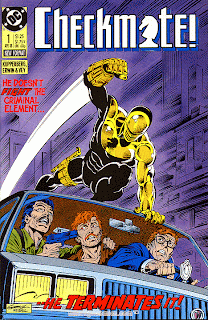 Knight One explodes on to the scene in DC Comics new title “Checkmate” #1. He is Waller’s replacement for Adrian Chase, the deceased Vigilante. It isn’t until halfway through the second issue that you realize he’s Black when he takes down a team of Neo Nazi’s and the leader goes off a racist tirade after being captured. He shuts up once his captor removes his right glove and reveals that he’s one of “those kind of people”. Gary Washington served as Knight One all throughout the 33 issue run of “Checkmate”.
Knight One explodes on to the scene in DC Comics new title “Checkmate” #1. He is Waller’s replacement for Adrian Chase, the deceased Vigilante. It isn’t until halfway through the second issue that you realize he’s Black when he takes down a team of Neo Nazi’s and the leader goes off a racist tirade after being captured. He shuts up once his captor removes his right glove and reveals that he’s one of “those kind of people”. Gary Washington served as Knight One all throughout the 33 issue run of “Checkmate”.1989
 Dwayne Taylor made his first appearance as Night Thrasher, a skateboarding Black superhero with an exosuit and advanced fighting ability. It would’ve sounded far fetched if we already didn’t see Black heroes and villians like Black Racer, Rocket Racer and Slyde previous to this. The difference was that Trash wasn’t one dimensional, he was a fully fleshed out character already which helped readers identify with him.
Dwayne Taylor made his first appearance as Night Thrasher, a skateboarding Black superhero with an exosuit and advanced fighting ability. It would’ve sounded far fetched if we already didn’t see Black heroes and villians like Black Racer, Rocket Racer and Slyde previous to this. The difference was that Trash wasn’t one dimensional, he was a fully fleshed out character already which helped readers identify with him. Night Thrasher, backed by his parent’s company and access to new technology he founded and successfully lead The New Warriors for years. He dusted off some previously forgotten Marvel characters (Nova, Marvel Boy, Firestar, Namorita), recruited a new one (Speedball) and eventually opened the floodgates for several more Black heroes/villians to be introduced (Silhouette, Midnight’s Fire and Bandit) as well.
Night Thrasher, backed by his parent’s company and access to new technology he founded and successfully lead The New Warriors for years. He dusted off some previously forgotten Marvel characters (Nova, Marvel Boy, Firestar, Namorita), recruited a new one (Speedball) and eventually opened the floodgates for several more Black heroes/villians to be introduced (Silhouette, Midnight’s Fire and Bandit) as well. Night Thrasher was one of the most popular heroes in the Marvel Universe in the 90’s and even though he recently passed away, his brother has decided to carry on his fight, by donning his uniform, taking his name and reassembling The New Warriors in a Post Civil War New York.
Night Thrasher was one of the most popular heroes in the Marvel Universe in the 90’s and even though he recently passed away, his brother has decided to carry on his fight, by donning his uniform, taking his name and reassembling The New Warriors in a Post Civil War New York.1990
 Rage made his first appearance in “Avengers” #326 as an angry super strong Black man that demanded to be admitted to the Avengers. At first, the reader would think that it was lazy writing to create a huge angry Black man called Rage with a chip on his shoulder and have him attack the Avengers demanding a job until it was revealed that Rage was a 13 year old mutant who grew overnight and had brand new super powers and an adult appearance that didn’t know where else to go.
Rage made his first appearance in “Avengers” #326 as an angry super strong Black man that demanded to be admitted to the Avengers. At first, the reader would think that it was lazy writing to create a huge angry Black man called Rage with a chip on his shoulder and have him attack the Avengers demanding a job until it was revealed that Rage was a 13 year old mutant who grew overnight and had brand new super powers and an adult appearance that didn’t know where else to go. The Avengers made him an honorary member and then a trainee before he left the Avengers Mansion and Dwayne “Night Thrasher” Taylor took him under his wing and mad him a full fledged member of The New Warriors.
The Avengers made him an honorary member and then a trainee before he left the Avengers Mansion and Dwayne “Night Thrasher” Taylor took him under his wing and mad him a full fledged member of The New Warriors. “Brotherman: Dictator Of Discipline” was printed and distributed by Big City Comics, a Black owned independent company based in Philadelphia, PA. The comic book was directed towards the young Hip Hop audience as was a pretty big hit. It was endorsed by Arsenio Hall and several popular Hip Hop groups at the time. When KMD first appeared on BET’s Rap City, their episode involved a trip to the comic book store to cop the new issue of Brotherman and extol the virtues of it to the viewing audience.
“Brotherman: Dictator Of Discipline” was printed and distributed by Big City Comics, a Black owned independent company based in Philadelphia, PA. The comic book was directed towards the young Hip Hop audience as was a pretty big hit. It was endorsed by Arsenio Hall and several popular Hip Hop groups at the time. When KMD first appeared on BET’s Rap City, their episode involved a trip to the comic book store to cop the new issue of Brotherman and extol the virtues of it to the viewing audience.The heads at Big City Comics were well ahead of the curve and the Brotherman trade paperback is on the way, people. Salute!
1991
 Ronald-Ann, a little Black girl who appeared in Berkeley Breathed’s “Bloom County” alongside the Black boy Oliver (a computer genius) was given a leading role in Breathed’s new strip “Outland”. Opus The Penguin and Bill The Cat were still kicking around as well in this popular political satire strip.
Ronald-Ann, a little Black girl who appeared in Berkeley Breathed’s “Bloom County” alongside the Black boy Oliver (a computer genius) was given a leading role in Breathed’s new strip “Outland”. Opus The Penguin and Bill The Cat were still kicking around as well in this popular political satire strip.
 John Wraith AKA Kestrel The Expediter makes his first appearance in “Wolverine” #48 as they flash back to the 60’s and Logan’s involvement with Canada’s infamous Team X during the Cold War. Wraith was pretty much a minor character (all he did was teleport/extract the squad when shit got too hot) that ended up getting merked by an enraged Sabretooth while on a mission but since Wll.i.am has recently been cast in this role in the upcoming “Wolverine: Origins” movie I felt that he should be included.
John Wraith AKA Kestrel The Expediter makes his first appearance in “Wolverine” #48 as they flash back to the 60’s and Logan’s involvement with Canada’s infamous Team X during the Cold War. Wraith was pretty much a minor character (all he did was teleport/extract the squad when shit got too hot) that ended up getting merked by an enraged Sabretooth while on a mission but since Wll.i.am has recently been cast in this role in the upcoming “Wolverine: Origins” movie I felt that he should be included. A man from the future fell out of the sky in “X-Men #282”. He had a telltale black “M” over one of his eyes that denoted that he was from an alternate reality where mutants are hunted and exterminated. Bishop was sent on a mission reminiscent of the movie “Terminator” where he had to prevent the disastrous events that take place in the future from taking place. After changing the future, Bishop decided to stay in this timeline and to join the X-Men using his power to manipulate and shoot beams of kinetic energy. He’s also shown up in the X-Men cartoon as he's one of the most popular mutants in the entire Marvel universe.
A man from the future fell out of the sky in “X-Men #282”. He had a telltale black “M” over one of his eyes that denoted that he was from an alternate reality where mutants are hunted and exterminated. Bishop was sent on a mission reminiscent of the movie “Terminator” where he had to prevent the disastrous events that take place in the future from taking place. After changing the future, Bishop decided to stay in this timeline and to join the X-Men using his power to manipulate and shoot beams of kinetic energy. He’s also shown up in the X-Men cartoon as he's one of the most popular mutants in the entire Marvel universe.
1992
 Sentinel and Chapel are both members of the super powered, gun toting team first showcasrd in the pages of Image Comics new title “Youngblood” #1. Image Comics was founded by a group of disgruntled Marvel artists and writers (most notably Rob Liefeld and Todd McFarlane) that were upset about not recieving royalties for the characters they created. “Youngblood” was among many new independent titles that Image and Wildstorm would create in the comic years.
Sentinel and Chapel are both members of the super powered, gun toting team first showcasrd in the pages of Image Comics new title “Youngblood” #1. Image Comics was founded by a group of disgruntled Marvel artists and writers (most notably Rob Liefeld and Todd McFarlane) that were upset about not recieving royalties for the characters they created. “Youngblood” was among many new independent titles that Image and Wildstorm would create in the comic years. Todd McFarlane’s new creation would prove to be a huge success for Image Comics, “Spawn”#1 would tell the story of a Black man named Al Simmons that is murdered but ends up making a deal with the Devil to return to the realm of the living in order to be near his wife and his daughter. Satan wants him to lead the armies of Hell but he rebels instead.
Todd McFarlane’s new creation would prove to be a huge success for Image Comics, “Spawn”#1 would tell the story of a Black man named Al Simmons that is murdered but ends up making a deal with the Devil to return to the realm of the living in order to be near his wife and his daughter. Satan wants him to lead the armies of Hell but he rebels instead. “Spawn” sold in record numbers and created a sensation among comic book fans. It became a hot property and eventually became an uncut cartoon series on cable and a mediocre feature film. Word is that a new, darker Spawn film is currently in the works and neither Michael Jai White nor D.B. Sweeney will be in this version.
“Spawn” sold in record numbers and created a sensation among comic book fans. It became a hot property and eventually became an uncut cartoon series on cable and a mediocre feature film. Word is that a new, darker Spawn film is currently in the works and neither Michael Jai White nor D.B. Sweeney will be in this version.1993
 Battalion, a mercenary with an armored suit featuring huge guns and other scary munitions makes his first appearance as a member of yet another armed to the teeth paramilitary squad in “Stormwatch” #1. He was cool enough to have his own T shirt!
Battalion, a mercenary with an armored suit featuring huge guns and other scary munitions makes his first appearance as a member of yet another armed to the teeth paramilitary squad in “Stormwatch” #1. He was cool enough to have his own T shirt!
 “Shadowhawk” #0 introduced the Image Comics fanbase to a hero that was like Spider-Man, Daredevil, Moon Knight and Black Panther all rolled up into one. He kinda got lost in the sauce with the dearth of new heroes that Image and Wildstorm were creating and soon he was about to get a LOT of company on the newstand.
“Shadowhawk” #0 introduced the Image Comics fanbase to a hero that was like Spider-Man, Daredevil, Moon Knight and Black Panther all rolled up into one. He kinda got lost in the sauce with the dearth of new heroes that Image and Wildstorm were creating and soon he was about to get a LOT of company on the newstand. Nightwatch debuted in “Web Of Spider Man” #99 and he’d get his very own title years later. It was a short lived run but pretty eventful. He would also be overshadowed by several more memorable/noteworthy Black superheroes to show up this year.
Nightwatch debuted in “Web Of Spider Man” #99 and he’d get his very own title years later. It was a short lived run but pretty eventful. He would also be overshadowed by several more memorable/noteworthy Black superheroes to show up this year.
 John Henry Irons, clearly a reference to the American hero/tall tale of John Henry, the “steel drivin’” Black man that died in a contest against a steam powered drill machine makes his first appearance in “Superman” #500. Shortly after the death of Superman, he throws on a suit of iron and picks up a big ol’ hammer to fight crime as Steel. “Steel” ran for 52 issues and in 1997 a feature film was made starring Shaquille O’ Neal in the title role. The film sucked and Steel hasn’t been a major part of the DC Universe since the book’s cancellation in 1998. Thanks, Shaq! (He killed Kazaam, too!)
John Henry Irons, clearly a reference to the American hero/tall tale of John Henry, the “steel drivin’” Black man that died in a contest against a steam powered drill machine makes his first appearance in “Superman” #500. Shortly after the death of Superman, he throws on a suit of iron and picks up a big ol’ hammer to fight crime as Steel. “Steel” ran for 52 issues and in 1997 a feature film was made starring Shaquille O’ Neal in the title role. The film sucked and Steel hasn’t been a major part of the DC Universe since the book’s cancellation in 1998. Thanks, Shaq! (He killed Kazaam, too!)
 Bloodwynd had the power to make you feel the collective pain and anguish of his slave ancestors (and he could fly!). Imagine that! The power to inflict the deep seeded despair felt by Black folks for over 400 plus years got Bloodwynd a spot in the Justice League Of America and he first appeared in issue #76. He was like a sideways version of Marvel’s Cloak who first appeared a full decade earlier (but with the ability to fly!).
Bloodwynd had the power to make you feel the collective pain and anguish of his slave ancestors (and he could fly!). Imagine that! The power to inflict the deep seeded despair felt by Black folks for over 400 plus years got Bloodwynd a spot in the Justice League Of America and he first appeared in issue #76. He was like a sideways version of Marvel’s Cloak who first appeared a full decade earlier (but with the ability to fly!).
 DC Comics new imprint Milestone Media was founded by Denys Cowan, Michael Davis, Derek Dingle and Dwayne McDuffie. Their mission statement was to create a more diverse universe of characters, heroes and villains...that they definitely achieved. Taking a cue from Marvel’s short lived New Universe, Big City Comics, Image and Wildstorm the heads at Milestone created a wide array of titles with different themes with their launch titles following a “Big Bang” type event that causes a segment of the cities population to develop powers and become altered humans in Dakota:
DC Comics new imprint Milestone Media was founded by Denys Cowan, Michael Davis, Derek Dingle and Dwayne McDuffie. Their mission statement was to create a more diverse universe of characters, heroes and villains...that they definitely achieved. Taking a cue from Marvel’s short lived New Universe, Big City Comics, Image and Wildstorm the heads at Milestone created a wide array of titles with different themes with their launch titles following a “Big Bang” type event that causes a segment of the cities population to develop powers and become altered humans in Dakota: ‘Blood Syndicate,” the story of a bunch of consolidated street gangs turned into heroes after the members all gain different super powers. Among them is the first ever invincible superhero from the Nation Of Gods and Earths named Wise Son, a dude named Tech 9 who has perfect aim with any firearm he touches and he can make them shoot an unlimited amount of ammo on some Ikari Warriors shit and a dog named Dogg that can communicate with humans.
‘Blood Syndicate,” the story of a bunch of consolidated street gangs turned into heroes after the members all gain different super powers. Among them is the first ever invincible superhero from the Nation Of Gods and Earths named Wise Son, a dude named Tech 9 who has perfect aim with any firearm he touches and he can make them shoot an unlimited amount of ammo on some Ikari Warriors shit and a dog named Dogg that can communicate with humans. “Hardware”, a genius inventor named Curt Metcalf uses his exosuit and a variety of weapons to fight villains in Dakota and wage war against his own employer, an evil arms dealer. Notable characters include his female counterpart, Technique.
“Hardware”, a genius inventor named Curt Metcalf uses his exosuit and a variety of weapons to fight villains in Dakota and wage war against his own employer, an evil arms dealer. Notable characters include his female counterpart, Technique. “Static”, a teenage boy gets the power to manipulate and emit static electricity and uses it to fight crime and protect the city. This title still lives on today in the form of the animated series “Static Shock” where several Milestone characters appear and make frequent cameos.
“Static”, a teenage boy gets the power to manipulate and emit static electricity and uses it to fight crime and protect the city. This title still lives on today in the form of the animated series “Static Shock” where several Milestone characters appear and make frequent cameos.1994
 “X-Men” #36 marked the first time Synch, a mutant with the power the tap into and mime the powers of fellow mutant and then use them as well is seen. Synch would take up residence in Xavier’s School For Gifted Youngsters and later become a member of Marvel’s new team of young mutants, Generation X. He would eventually die saving his fellow team members.
“X-Men” #36 marked the first time Synch, a mutant with the power the tap into and mime the powers of fellow mutant and then use them as well is seen. Synch would take up residence in Xavier’s School For Gifted Youngsters and later become a member of Marvel’s new team of young mutants, Generation X. He would eventually die saving his fellow team members.M
 M had super strength, invulnerability and some psionic powers she tried to keep under wraps. She first appears in “X-Men” #316, later enrolls in Xavier’s school and becomes a member of Generation X. It was later revealed that M was actually a combination of three siblings, an older sister and her two younger twins. She would become romantically involved with both Synch and the super popular mutant Jamie Madrox.
M had super strength, invulnerability and some psionic powers she tried to keep under wraps. She first appears in “X-Men” #316, later enrolls in Xavier’s school and becomes a member of Generation X. It was later revealed that M was actually a combination of three siblings, an older sister and her two younger twins. She would become romantically involved with both Synch and the super popular mutant Jamie Madrox.1996
 Isiah Crockett first appeared in the new “Teen Titans” as Joto (Swahili for “heat”), the problem is that “joto” is a gay slur in Spanish so as to avoid confusion Isiah chose the codename Hot Spot. He has the ability to generate, control and project fire at extremely high temperatures. He is completely engulfed by flame when he uses he powers and he also can fly. He’s also appeared in animated form in the Teen Titans cartoon.
Isiah Crockett first appeared in the new “Teen Titans” as Joto (Swahili for “heat”), the problem is that “joto” is a gay slur in Spanish so as to avoid confusion Isiah chose the codename Hot Spot. He has the ability to generate, control and project fire at extremely high temperatures. He is completely engulfed by flame when he uses he powers and he also can fly. He’s also appeared in animated form in the Teen Titans cartoon.
 “Superboy & The Ravers” #1 was the first time Hero Cruz made the DC Comics scene. Hero Cruz was notable because he received aspecial device that allowed him to receive/have different super powers whenever he used it. He would go on to star in his own title “Dial H For Hero” as well. Hero Cruz also was/is a notable character because he came out of the closet so he was not only a Black hero but a gay one as well.
“Superboy & The Ravers” #1 was the first time Hero Cruz made the DC Comics scene. Hero Cruz was notable because he received aspecial device that allowed him to receive/have different super powers whenever he used it. He would go on to star in his own title “Dial H For Hero” as well. Hero Cruz also was/is a notable character because he came out of the closet so he was not only a Black hero but a gay one as well.1997
 Maggott was the codename of Japheth, an African immigrant who came to America looking for Magneto but ended up joining the X-Men. He had the power to convert matter into energy that he could then channel or use to boost his own strength (which turned him blue). Japheth was odd to the other X-Men because he was rather large but he never seemed to eat.
Maggott was the codename of Japheth, an African immigrant who came to America looking for Magneto but ended up joining the X-Men. He had the power to convert matter into energy that he could then channel or use to boost his own strength (which turned him blue). Japheth was odd to the other X-Men because he was rather large but he never seemed to eat. Later, it was revealed that his mutant power included him having no digestive system whatsoever so he couldn't eat solid food once he hit puberty, it was instead replaced by two huge slug like creatures that would burrow out of his chest every night (causing him much pain) and go out into the night consuming all forms of matter just to come back just to burrow back into his chest again. Maggott would later die in a mutant extermination camp...he seemed more relieved than scared as he was being executed.
Later, it was revealed that his mutant power included him having no digestive system whatsoever so he couldn't eat solid food once he hit puberty, it was instead replaced by two huge slug like creatures that would burrow out of his chest every night (causing him much pain) and go out into the night consuming all forms of matter just to come back just to burrow back into his chest again. Maggott would later die in a mutant extermination camp...he seemed more relieved than scared as he was being executed. Mister Terrific is one of DC’s most popular characters and he made his first appearance in “Spectre” #54. He is a top government operative and he was instrumental in the reboot of the “Checkmate” title replacing Knight One. He is super intelligent, can learn or glean damn near anything after studying it long enough and he is supremely skilled physically having mastered multiple fighting systems. He can't be tracked, traced or detected by any technology on Earth and he's a born leader with a vast amount of technological knowledge. He definitely looks like a product of the 90’s and his name make him sound like a wrestler, though.
Mister Terrific is one of DC’s most popular characters and he made his first appearance in “Spectre” #54. He is a top government operative and he was instrumental in the reboot of the “Checkmate” title replacing Knight One. He is super intelligent, can learn or glean damn near anything after studying it long enough and he is supremely skilled physically having mastered multiple fighting systems. He can't be tracked, traced or detected by any technology on Earth and he's a born leader with a vast amount of technological knowledge. He definitely looks like a product of the 90’s and his name make him sound like a wrestler, though. Malden, MA native Keith Knight’s comic strip “The K Chronicles” makes it very first appearance. Soon, it would appear all over the internet via Salon.com and shortly thereafter his “K Chronicles”, “(th)ink” and “Life’s Little Victories” strips would appear in newspapers and he has printed several trade paperbacks over the years. Don’t sleep on Keith Knight or his work.
Malden, MA native Keith Knight’s comic strip “The K Chronicles” makes it very first appearance. Soon, it would appear all over the internet via Salon.com and shortly thereafter his “K Chronicles”, “(th)ink” and “Life’s Little Victories” strips would appear in newspapers and he has printed several trade paperbacks over the years. Don’t sleep on Keith Knight or his work.
1998
 Jakeem Thunder made his debut in “Flash” #134 and a full decade later Jakeem and his genie Thunderbolt are still kicking around in the DC Universe as members of the Justice League Of America.
Jakeem Thunder made his debut in “Flash” #134 and a full decade later Jakeem and his genie Thunderbolt are still kicking around in the DC Universe as members of the Justice League Of America. Afro Samurai makes his debut in the Japanese magazine “Nou Nou Hau”. Afro will create a sensation and appear in several manga editions before Americans began to take notice in 2005 and option the property for an animated series, a full length animated feature and a video game. The Afro Samurai mini series is available on DVD, an animated series is in production and a full length movie is in negotiations.
Afro Samurai makes his debut in the Japanese magazine “Nou Nou Hau”. Afro will create a sensation and appear in several manga editions before Americans began to take notice in 2005 and option the property for an animated series, a full length animated feature and a video game. The Afro Samurai mini series is available on DVD, an animated series is in production and a full length movie is in negotiations.
1999
 Aaron McGruder creates “The Boondocks”, a brand new comic strip featuring Huey and Riley Freeman, young Black kids moved from Chicago to live with their grandfather in the suburb of Woodcrest. This comic echoed the sentiments of an entire generation and went where no Black strip had ever previously gone before. It often was banned from different papers and McGruder receives his fair share of hate mail. Huey has said what I was thinking so often that I used to make it a point of cutting out each strip I liked because I was convinced it would get cancelled at any moment.
Aaron McGruder creates “The Boondocks”, a brand new comic strip featuring Huey and Riley Freeman, young Black kids moved from Chicago to live with their grandfather in the suburb of Woodcrest. This comic echoed the sentiments of an entire generation and went where no Black strip had ever previously gone before. It often was banned from different papers and McGruder receives his fair share of hate mail. Huey has said what I was thinking so often that I used to make it a point of cutting out each strip I liked because I was convinced it would get cancelled at any moment. Almost 10 years, several trade paperbacks, and a hit cartoon series later I now have a comic strip that managed to surpass my previous favorites, “Life In Hell” and “Calvin And Hobbes”. *starts slow clap for “The Boondocks”*
Almost 10 years, several trade paperbacks, and a hit cartoon series later I now have a comic strip that managed to surpass my previous favorites, “Life In Hell” and “Calvin And Hobbes”. *starts slow clap for “The Boondocks”*2001
 “Batman: Orpheus Rising” #1 features the tale of a new crime fighter on the streets of Gotham City named Gavin King that wants to follow in the footsteps of his idol, Batman. Orpheus was an exciting new character that was rough around the edges but with the proper training and some new gear upgrades could help take out some of Gotham’s top supervillains. Orpheus was still training to become one of Gotham’s elite heroes one day soon when he was killed. Gotham eats it’s young, I guess (no Jason Todd).
“Batman: Orpheus Rising” #1 features the tale of a new crime fighter on the streets of Gotham City named Gavin King that wants to follow in the footsteps of his idol, Batman. Orpheus was an exciting new character that was rough around the edges but with the proper training and some new gear upgrades could help take out some of Gotham’s top supervillains. Orpheus was still training to become one of Gotham’s elite heroes one day soon when he was killed. Gotham eats it’s young, I guess (no Jason Todd).2002
 Josiah Power, the head of the Power Company first appeared in “Justice League Of America” #61. His power to use energy and become almost invulnerable while being a power businessman with his own team of superpowered agents has proven extremely problematic to his adversaries.
Josiah Power, the head of the Power Company first appeared in “Justice League Of America” #61. His power to use energy and become almost invulnerable while being a power businessman with his own team of superpowered agents has proven extremely problematic to his adversaries.
2003
 The story goes that the U.S. Government, in an effort to test out the new Super Soldier serum used a method reminiscent of the infamous Tuskegee Experiment on Black G.I.’s. Only one of their test subjects survived and he developed super strength, speed, agility and endurance. Isiah Bradley was then trained and given a uniform along with a shield and became the 1st Captain America predating Steve Rogers. His entire story was told in the Marvel graphic novel series “Truth: Red, White And Black”.
The story goes that the U.S. Government, in an effort to test out the new Super Soldier serum used a method reminiscent of the infamous Tuskegee Experiment on Black G.I.’s. Only one of their test subjects survived and he developed super strength, speed, agility and endurance. Isiah Bradley was then trained and given a uniform along with a shield and became the 1st Captain America predating Steve Rogers. His entire story was told in the Marvel graphic novel series “Truth: Red, White And Black”. “The Crew” #1 is about a secret superhero team that includes the son of the original Captain America, Josiah Bradley. Josiah converted to Islam and now continues his family legacy by wearing one of his fathers uniforms and carrying his same shield as he defends America and it’s citizens as Josiah X alongside James Rhodes AKA War Machine.
“The Crew” #1 is about a secret superhero team that includes the son of the original Captain America, Josiah Bradley. Josiah converted to Islam and now continues his family legacy by wearing one of his fathers uniforms and carrying his same shield as he defends America and it’s citizens as Josiah X alongside James Rhodes AKA War Machine.2004
 Elijah Bradley was already not your typical New York teen, then he received a transfusion of blood from his grandfather, the original Super Soldier Captain America. Shortly afterwards, Elijah developed increased strength, speed and endurance. As time went on he only got stronger, sharper and more agile and eventually the government showed up at his door.
Elijah Bradley was already not your typical New York teen, then he received a transfusion of blood from his grandfather, the original Super Soldier Captain America. Shortly afterwards, Elijah developed increased strength, speed and endurance. As time went on he only got stronger, sharper and more agile and eventually the government showed up at his door. He was recruited for a new team of superheroes and tagged to be their leader. He first appeared in full uniform as his new alter ego, The Patriot in “Young Avengers” #1 the next year. He had lied about having superpowers previously, instead he was on HGH. He ended up being injured in combat and ended up REALLY needing an emergency blood transfusion from his grandfather which gave him his sought after super powers.
He was recruited for a new team of superheroes and tagged to be their leader. He first appeared in full uniform as his new alter ego, The Patriot in “Young Avengers” #1 the next year. He had lied about having superpowers previously, instead he was on HGH. He ended up being injured in combat and ended up REALLY needing an emergency blood transfusion from his grandfather which gave him his sought after super powers.
 “Firestorm” #1 featured a brand new Firestorm, this time he was a Black teenager and there wasn’t any annoying professor appearing as a floating head to give him advice on how to use his matter manipulation powers most effectively. Thank God, that used to drive me crazy back in the days. Here's to the new Nuclear Man.
“Firestorm” #1 featured a brand new Firestorm, this time he was a Black teenager and there wasn’t any annoying professor appearing as a floating head to give him advice on how to use his matter manipulation powers most effectively. Thank God, that used to drive me crazy back in the days. Here's to the new Nuclear Man. “Blokhedz”#1 would herald the coming of the Madtwiinz (Mark & Mike Davis). Straight outta Cambridge, MA comes the creative team behind one of the most inventive comic book properties in years. The story of Blak, a young up and coming emcee in Empire City and his brother Konz as they try to make it to the top and avoid the pitfalls of the streets. The comic book has been in print and a spin off strip has appeared in the pages of Scratch magazine. An animated feature length film is in the works and toys based on the comic book/strips are also available as well as graphic novels here.
“Blokhedz”#1 would herald the coming of the Madtwiinz (Mark & Mike Davis). Straight outta Cambridge, MA comes the creative team behind one of the most inventive comic book properties in years. The story of Blak, a young up and coming emcee in Empire City and his brother Konz as they try to make it to the top and avoid the pitfalls of the streets. The comic book has been in print and a spin off strip has appeared in the pages of Scratch magazine. An animated feature length film is in the works and toys based on the comic book/strips are also available as well as graphic novels here.
2005
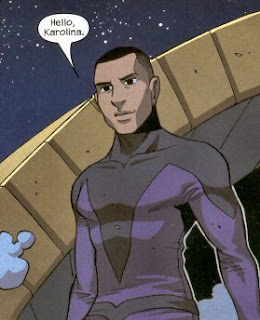 Xavin, the young shape shifting Skrull appears in “Runaways” #7. Xavin first appears as a female and then as a Black male depending on the situation (and if they're in public) which causes a lot of confusion for casual readers of the title (as well as the group members themselves).
Xavin, the young shape shifting Skrull appears in “Runaways” #7. Xavin first appears as a female and then as a Black male depending on the situation (and if they're in public) which causes a lot of confusion for casual readers of the title (as well as the group members themselves).2006
 The DC Comics title “American Way” is about an alternate reality in which it’s the 60’s and superheroes are multimedia stars. Everything’s going great until the newest and most exciting hero makes the scene, he’s super powerful, a born leader and the camera loves him. Just one problem...he’s a Negro! When the hero known as the New American appears in living rooms all across the nation. Will America ever be able to get past their initial trepidation and embrace a Black superhero? I mean, Joe Louis and Cassius Clay were another matter altogether compared to this!
The DC Comics title “American Way” is about an alternate reality in which it’s the 60’s and superheroes are multimedia stars. Everything’s going great until the newest and most exciting hero makes the scene, he’s super powerful, a born leader and the camera loves him. Just one problem...he’s a Negro! When the hero known as the New American appears in living rooms all across the nation. Will America ever be able to get past their initial trepidation and embrace a Black superhero? I mean, Joe Louis and Cassius Clay were another matter altogether compared to this!2007
 “Blaster Knuckle” comes straight out of Japan and is about a former slave that develops a mechanized fist on his right hand as well as other inventions that he uses to fight injustice in the guise of the Klu Klux Klan (them again?), a group of racist vampires that feed on Black citizens (?). This manga partly inspired the recent episode of The Boondocks cartoon “The Story Of Catcher Freeman” and may end up the next import to get the Afro Samurai treatment since it has the internet going nuts (word to Obama Girl).
“Blaster Knuckle” comes straight out of Japan and is about a former slave that develops a mechanized fist on his right hand as well as other inventions that he uses to fight injustice in the guise of the Klu Klux Klan (them again?), a group of racist vampires that feed on Black citizens (?). This manga partly inspired the recent episode of The Boondocks cartoon “The Story Of Catcher Freeman” and may end up the next import to get the Afro Samurai treatment since it has the internet going nuts (word to Obama Girl).
2008
Dart Adams fights off the flu, bill collectors and constant e-mails from readers wondering what's taking so long to finish this damn blog. I'm a damn Black hero just for finishing this!
I had to leave out/omit some characters...if I didn’t I never would’ve finished. Word to Moses Magnum, Mister Bones, Apocalypse, The Sphinx, Arsenal (Moon Knight), Slyde, Bushmaster, Chemistro, Kiber The Cruel, Nightshade, Onyx, Equinox, and the list goes on. Thanks to you all for reading this, you have no idea how hard it was for me to complete.
This blog is dedicated to my father (Rest In Eternal Peace, Daddy), my mother and my older brother David Adams. They're my own personal Black heroes.
Editor's Note: "Dart Adams presents Black Like Me: Black Comic Heroes Through The Ages Revisited" is currently in the works and is coming on Friday.
One.
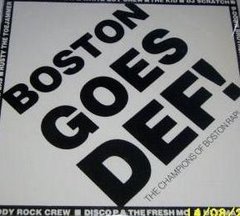

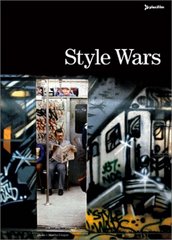

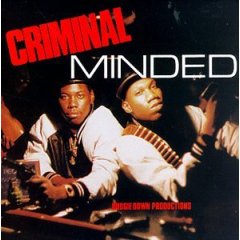
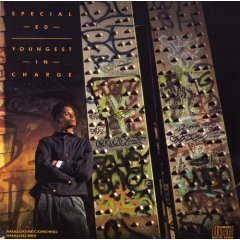
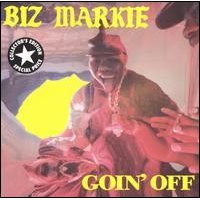


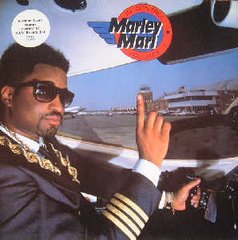


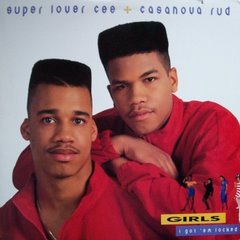



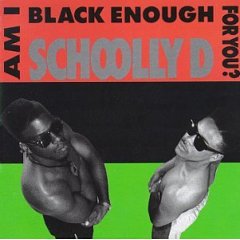

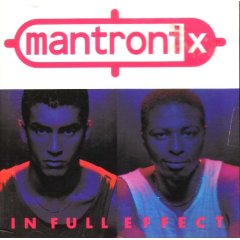
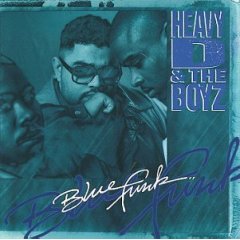
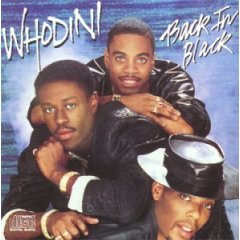



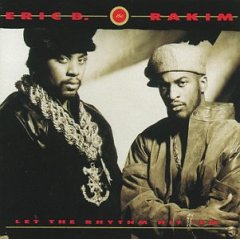
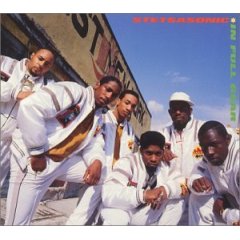


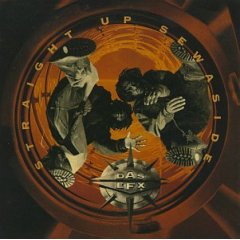
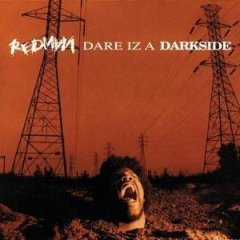


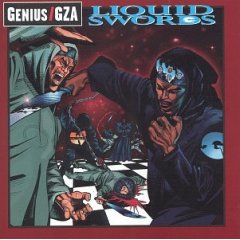

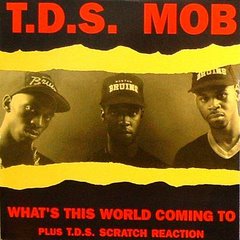
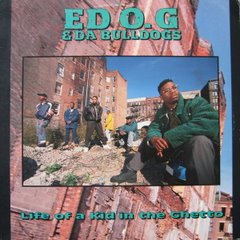

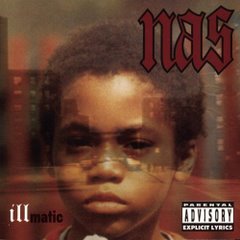
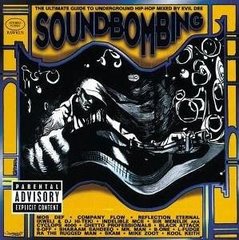

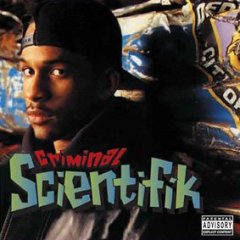
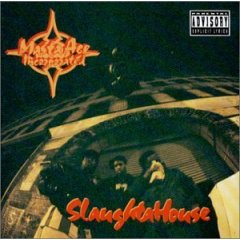




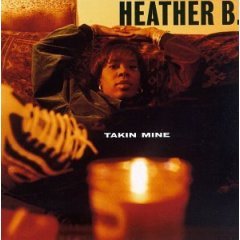
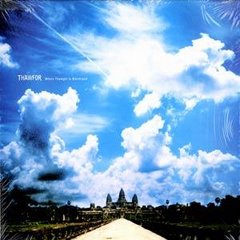


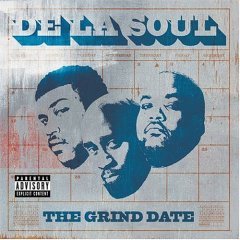
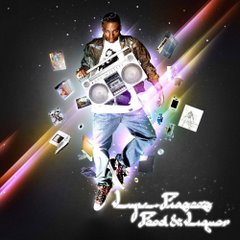







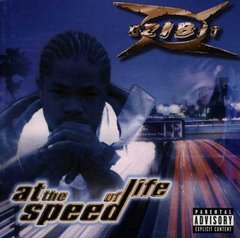
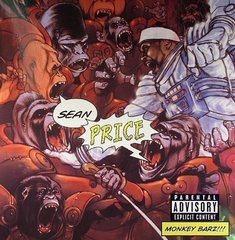

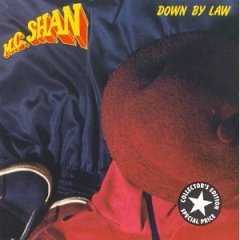

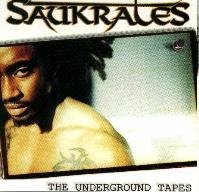
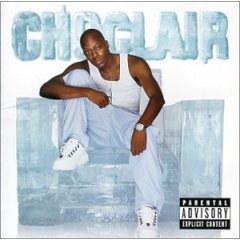


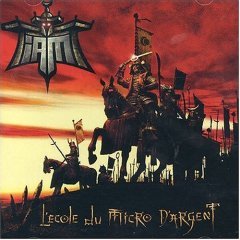

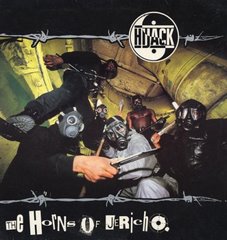

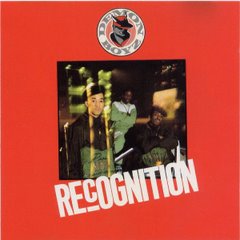
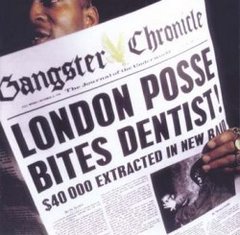
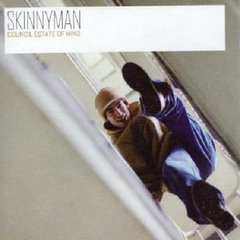



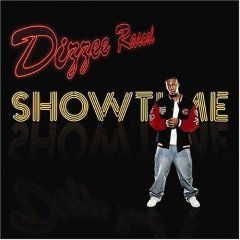

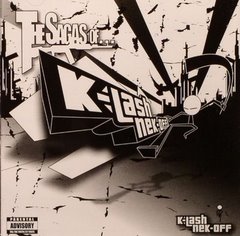

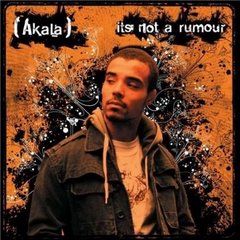




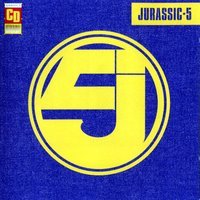
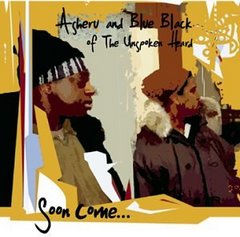

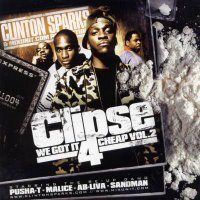


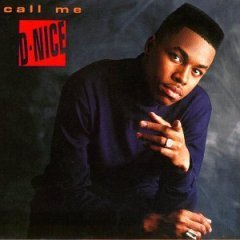
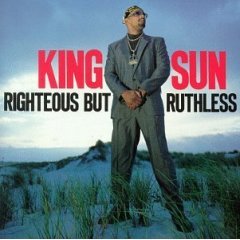



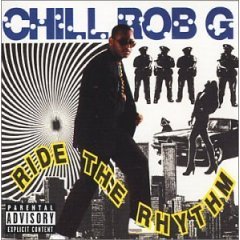



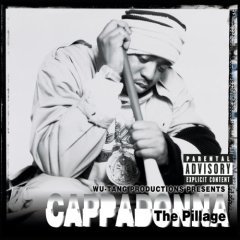



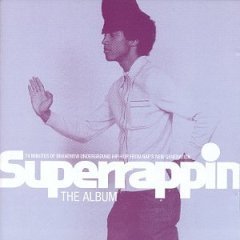
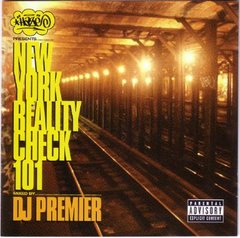



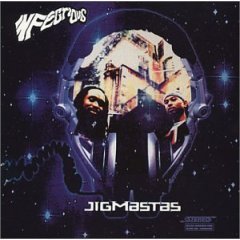
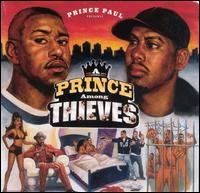
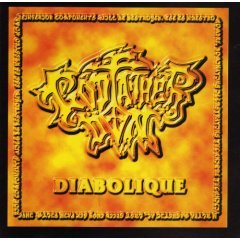
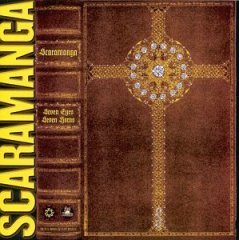


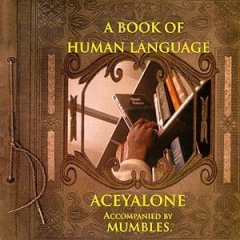
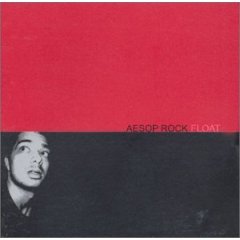
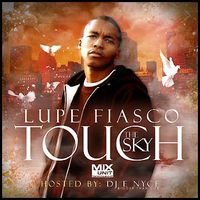
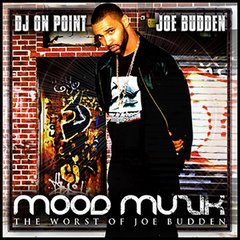





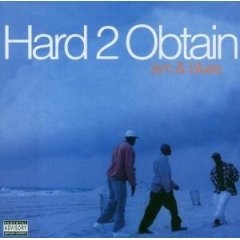
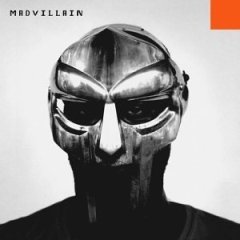
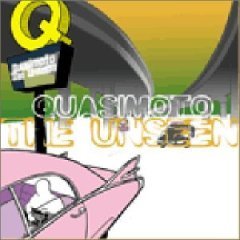


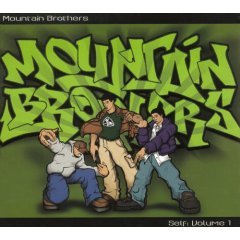



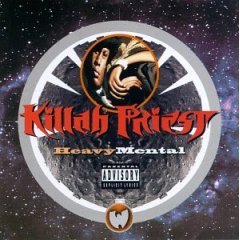
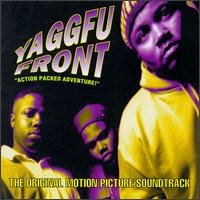

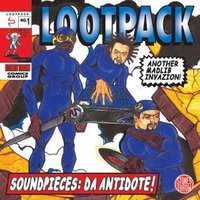

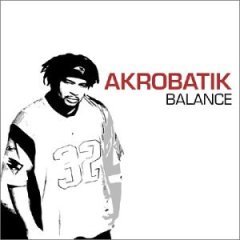


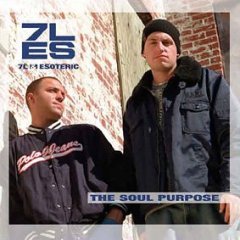
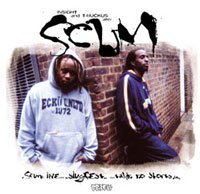

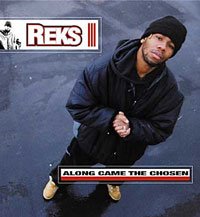
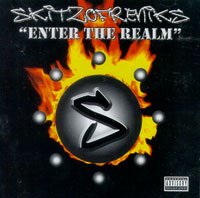
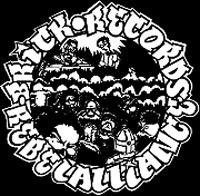


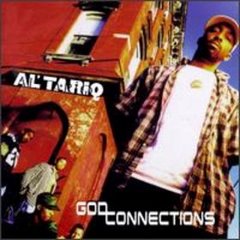

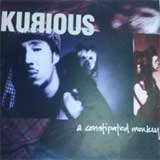


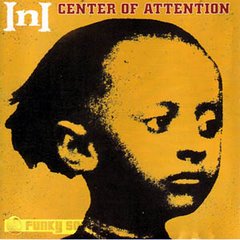
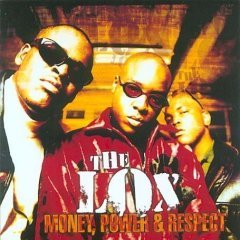
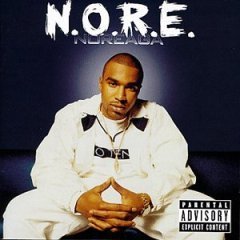
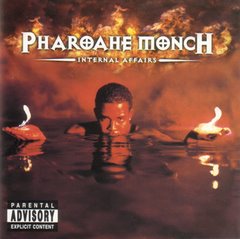
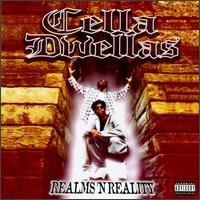


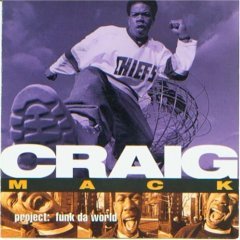


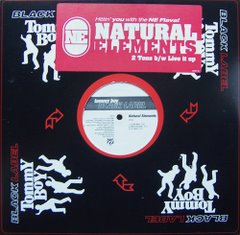
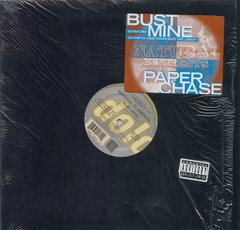

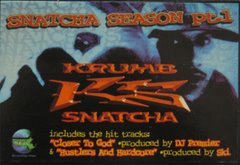







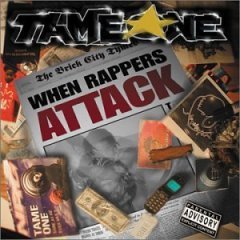
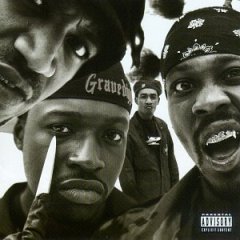

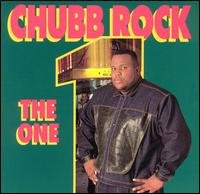
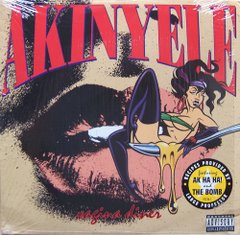

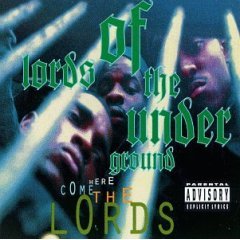

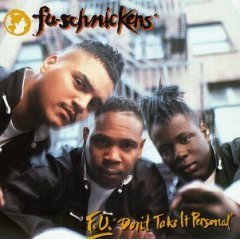


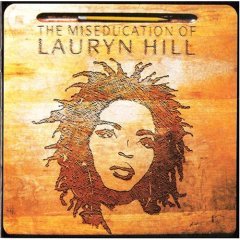
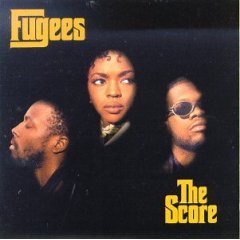
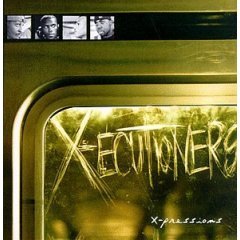
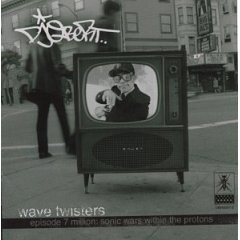

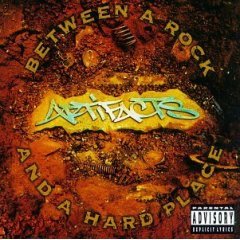
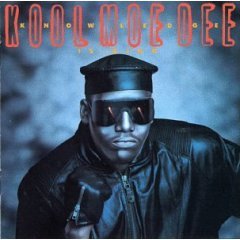
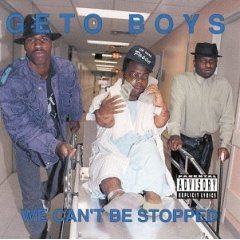
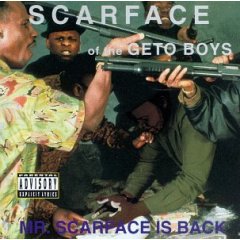
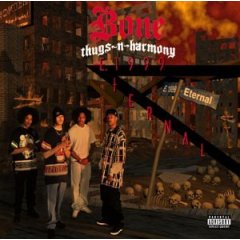







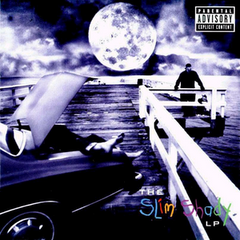

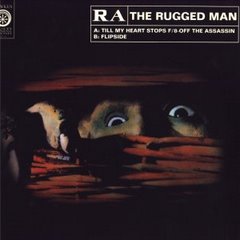
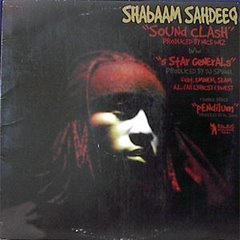
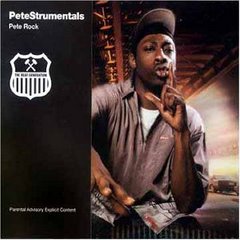
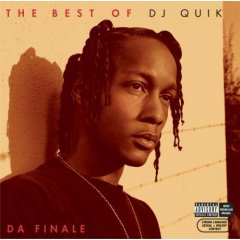





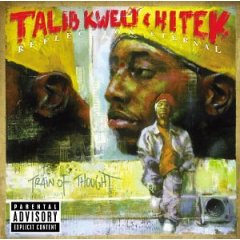
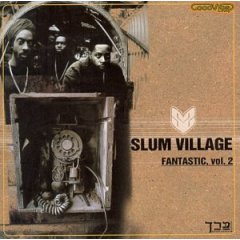
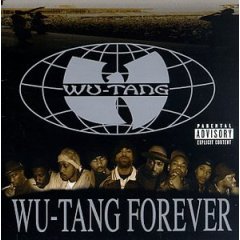
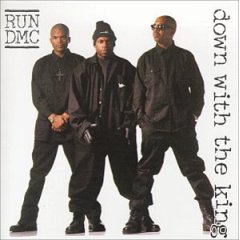

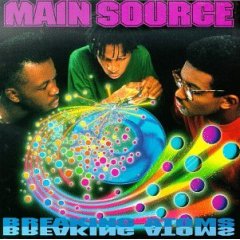

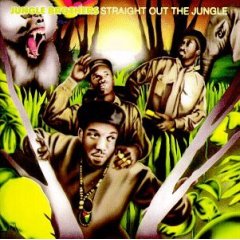

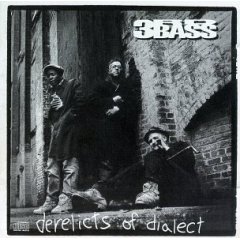

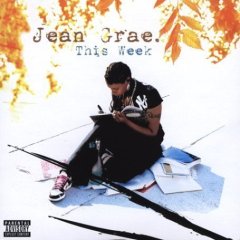
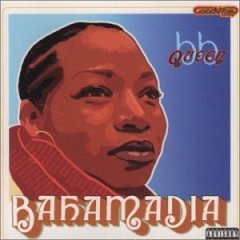

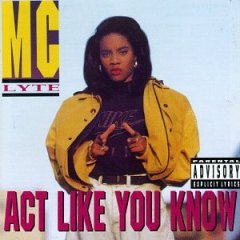

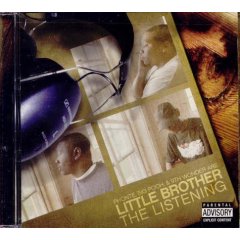

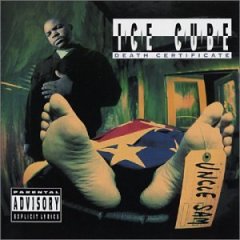

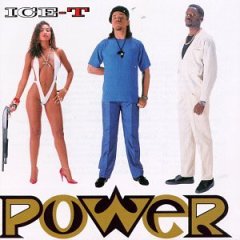

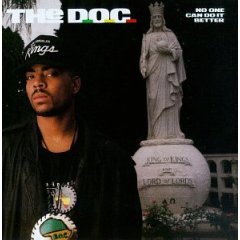




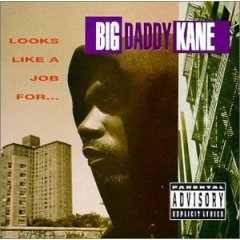

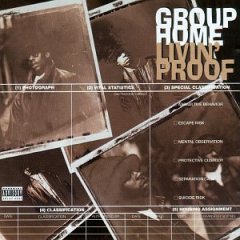

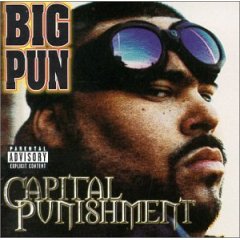
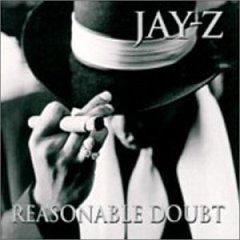
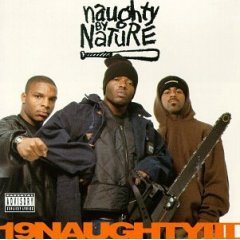


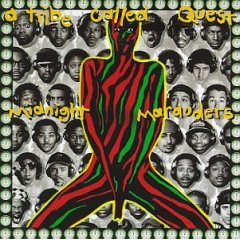
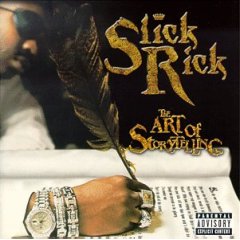
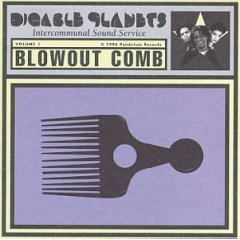
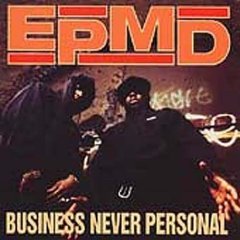






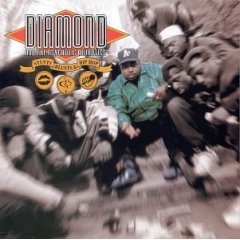

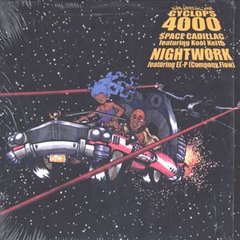
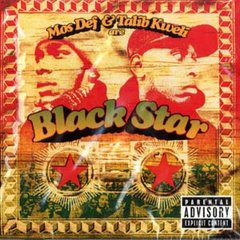
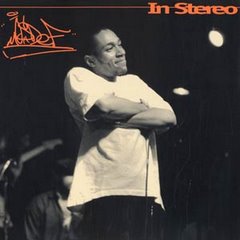
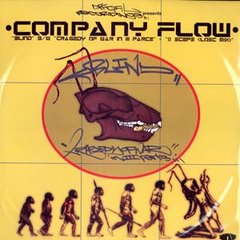

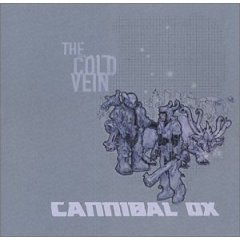

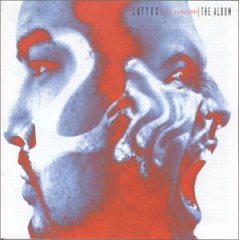
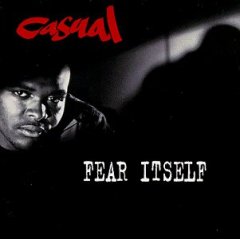




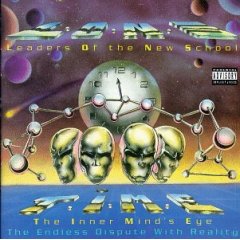
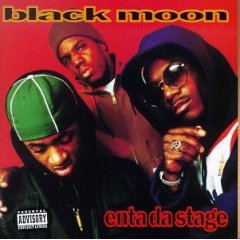

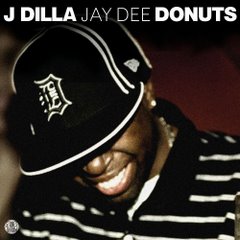
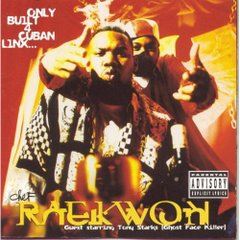

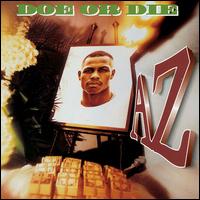
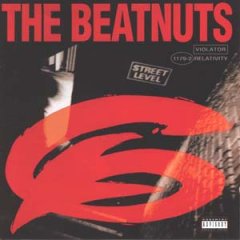

7 comments:
Great work! May I humbly suggest DEATHLOK, a black cyborg superhero who had a hit mini-series in 1988, then a successful solo series for several years afterwards?
Good stuff Dart. I enjoyed reading it last year and reading it again reminds me what Black History Month should be about
Interesting read, Dart, I can tell you put a hell of a lot of work into it. Have you read the Final Crisis series? Mr. Terrific and Black Lightning play a pretty big part in the series (especially "Resist" and "Submit") and The Tattoed Man becomes kind of an unwilling hero.
@ Dwayne:
Deathlok is in my new list starting in his 1991 series.
One.
Great piece, yo. Thorough isn't the word.
Luke Cage has gotten better as a character over the years, especially since Bendis has been writing him. Prolly my favorite Black superhero with John Stewart right behind him. I thought it was lame they made Patriot from the Young Avengers a drug addict, but it's better then that whole Milestone Comics debacle. I hear their intergrating those characters into mainstream DCU. Should be interesting.
... finally!.. i found curtis strip!.. thank you for this post.. :)
Would you consider including the first Black superheroine, ButterFly?
http://heroheroinehistory.blogspot.com/2011/02/butterflythe-first-black-superheroines.html
Post a Comment